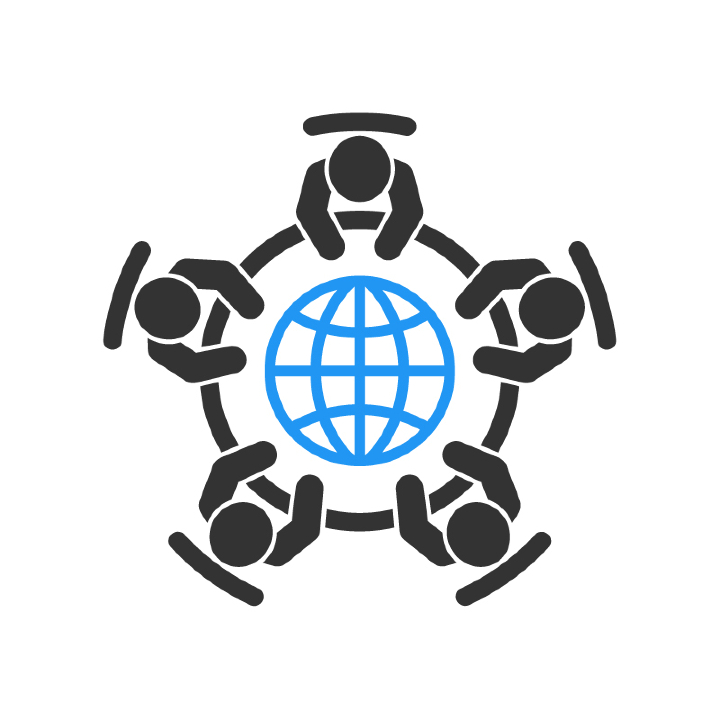
 Data Structure
Data Structure Networking
Networking RDBMS
RDBMS Operating System
Operating System Java
Java MS Excel
MS Excel iOS
iOS HTML
HTML CSS
CSS Android
Android Python
Python C Programming
C Programming C++
C++ C#
C# MongoDB
MongoDB MySQL
MySQL Javascript
Javascript PHP
PHP
- Selected Reading
- UPSC IAS Exams Notes
- Developer's Best Practices
- Questions and Answers
- Effective Resume Writing
- HR Interview Questions
- Computer Glossary
- Who is Who
Global Projects are a New Form of Organization
The coordination of people and teams across many places and cultures is made possible by the use of global projects as a sort of organizational structure. In industries where cooperation and communication between many locations are essential for success, such as businesses that operate on a worldwide basis, they are frequently employed. Global projects are also broad-reaching undertakings that entail several nations or organizations cooperating to achieve a single objective.
We no longer confine ourselves to our specific corners of the world in the connected age we live in today. On journeys for pleasure or business, we can travel the world in a flash. In a matter of seconds, we can video chat with distant allies. We can order almost anything we want from anywhere in the world with only a click of a mouse, and it will be delivered right to our front door.
What are Global Projects?

Global projects are significant endeavors that need coordination and cooperation between people, groups, and organizations from various nations and cultures. These initiatives could take the form of cross-regional business activities, research, development, or even humanitarian initiatives.
Worldwide research partnerships, multinational firms managing their operations across many nations, and international humanitarian aid initiatives are a few examples of global projects. To be successful, these programs need strong leadership, excellent communication, and the capacity to work beyond linguistic and cultural barriers.
Need for Global Projects
Because the world's economy and civilizations are becoming more interconnected, there is a demand for global projects. Businesses and organizations must coordinate and collaborate with partners, suppliers, and clients across numerous nations and cultures as they conduct business on a global scale.
Additionally, an international collaboration between scientists and researchers is necessary for research and development initiatives, which calls for global IT projects. This could involve the creation of novel technologies, like artificial intelligence, or the creative integration of current ones in the realm of information technology.
The capacity to provide seamless integration and collaboration across many cultures, languages, time zones and nations is another crucial component of global IT initiatives. This is especially crucial for businesses that need to make sure that their IT systems can enable efficient communication and collaboration because they have staff and clients located all over the world.
The increased reliance of businesses and organizations on technology, as well as the expanding interconnectedness of the global economies and cultures, have led to a demand for global IT initiatives.
The Objective of Global Projects
Global initiatives generally attempt to accomplish one or more of the following goals, however exact project goals may change depending upon the type of industry ?
Boost efficiency and Productivity ? Global projects frequently seek to boost efficiency and productivity by making use of the knowledge and assets of numerous nations and organizations.
Promote Innovation ? By bringing together specialists from various fields and cultures to work on novel concepts and technology, global projects can promote innovation.
Expand Operations ? By entering new markets and reaching out to new clients, international projects can assist firms and organizations in expanding their operations.
Collaboration and Communication ? This can be improved through global initiatives, which can promote productivity and success among team members from various nations and cultures.
Research and Development can be made easier by international projects that bring together scientists and researchers from many nations to work on shared objectives.
Cost Reduction ? By pooling resources and knowledge among numerous nations and organizations, global projects can result in cost reductions.
Collaboration and Understanding may improve as a result of collaborations and ties that international projects can foster between nations and organizations.
In conclusion, the goals of global projects can differ depending on the particular project, but they typically seek to boost productivity, spur innovation, broaden business operations, enhance communication, support research and development, address global issues, achieve cost savings, and forge partnerships.
Drawbacks of Global Projects
There are several difficulties and disadvantages that come with global projects, some of which are as follows ?
Complexity ? Global initiatives frequently involve numerous partners and stakeholders from various nations and cultures, making them complicated and diverse. Coordination and communication may become challenging as a result, resulting in delays and higher expenses.
Cultural Differences ? Cultural differences can lead to miscommunication and misunderstandings among project team members, which can result in inefficiencies and lower project success.
Language Problems can also make it harder to understand and communicate, which can result in errors and misunderstandings.
Time Zone differences can make it difficult to schedule meetings and communications and coordinate tasks across several time zones, which can cause delays.
Legal and Regulatory Issues ? Navigating various legal and regulatory frameworks is a common task in global initiatives, which may be time-consuming and expensive.
Security Hazards ? International initiatives can also pose security issues, especially when it comes to the exchange of private data and information.
Problems with Leading and Inspiring Remote teams ? Leading and inspiring remote teams can be difficult, especially when team members come from diverse cultures and nations.
Quality Standard ? It can be challenging to maintain quality standards across numerous sites, and it could be necessary to allocate additional resources.
Note ? Although these may be disadvantages, it's crucial to remember that they may be addressed with effective planning, communication, and management, allowing the advantages of international projects to be fully realized.
Conclusion

In conclusion, global projects provide a novel organizational structure that enables coordination and cooperation between people, groups, and organizations from many nations and cultures. These initiatives are becoming more and more important in today's interconnected world, where corporations and organizations work on a worldwide scale and international cooperation is needed to address concerns like climate change, poverty, and inequality.
Cultural and linguistic barriers, time zone differences, and other issues may all be addressed with the right planning, communication, and management, allowing for the full realization of the advantages of global projects. Global projects can, however, also present a number of problems.
As technology plays a major part in the operations of businesses and organizations, global IT projects are likewise becoming more and more significant. These initiatives are meant to boost productivity, stimulate creativity, broaden company operations, enhance communication, speed up research and development, deal with global concerns, cut costs, and create new alliances.
Global projects, as a new type of organization, allow for the coordination and collaboration of people, teams, and organizations from other nations and cultures, and they can have a substantial positive impact on both businesses and organizations as well as society at large.

